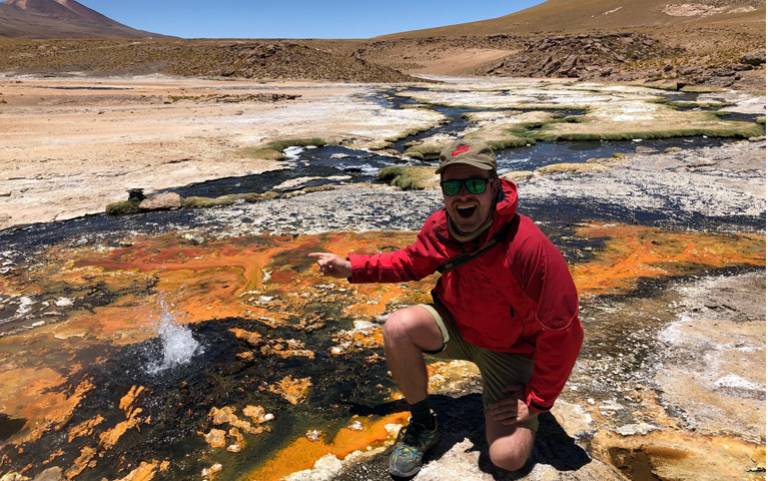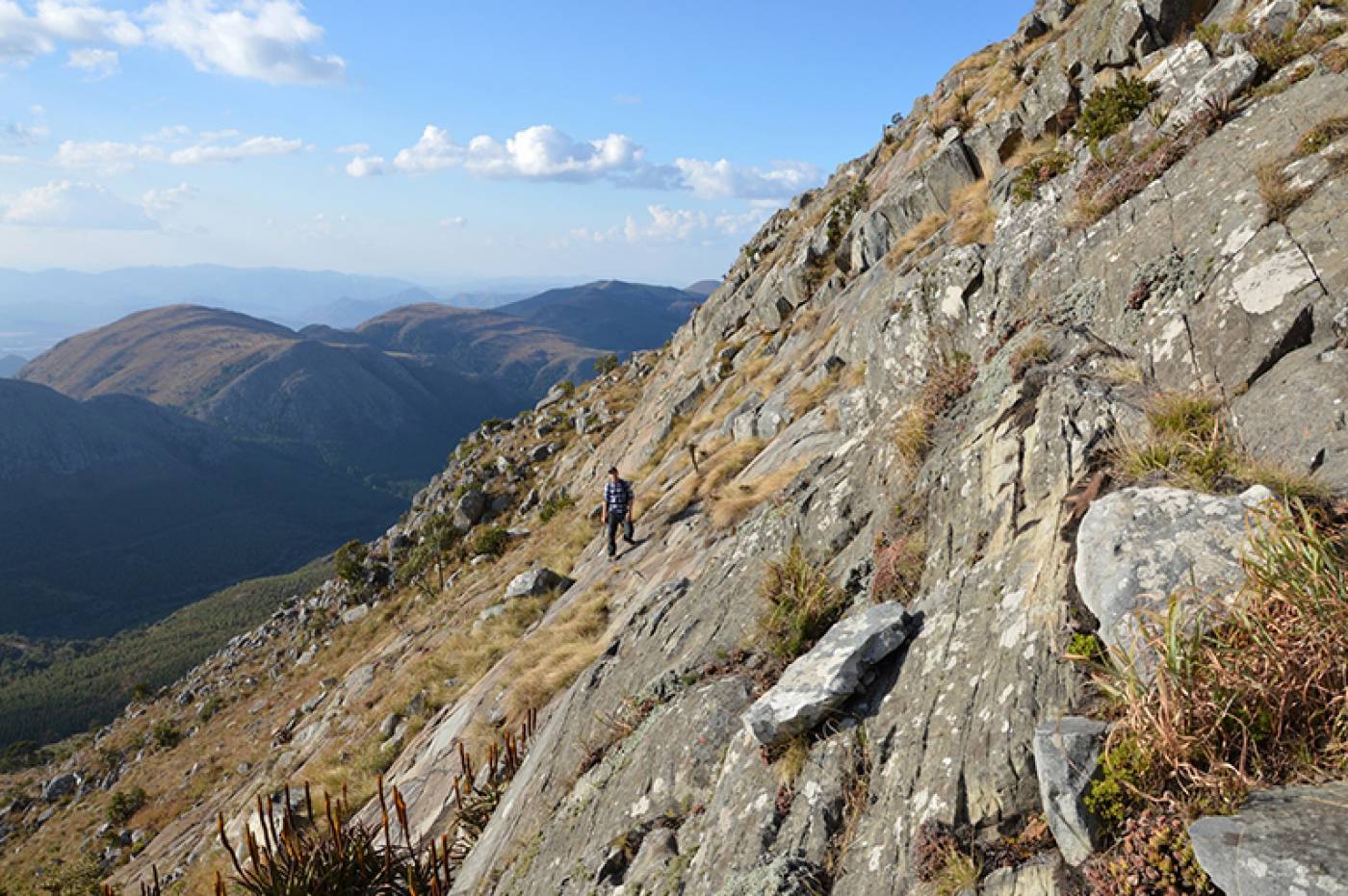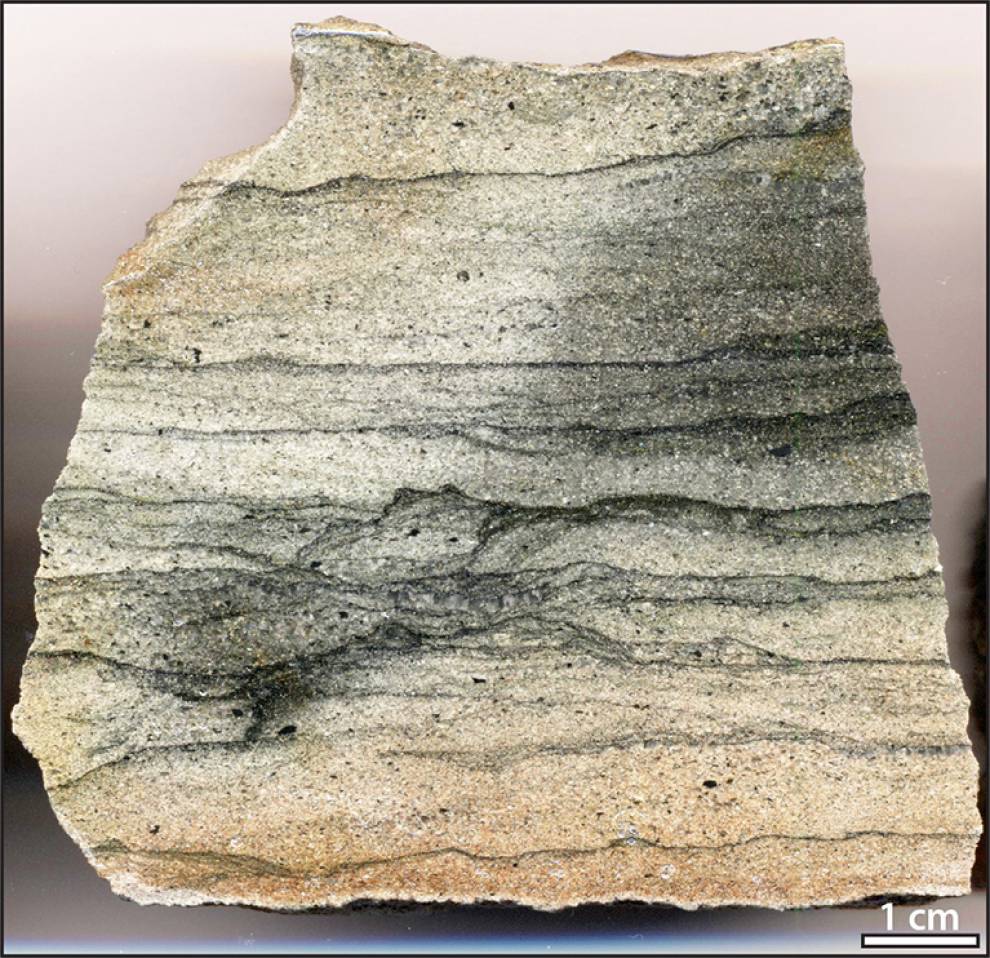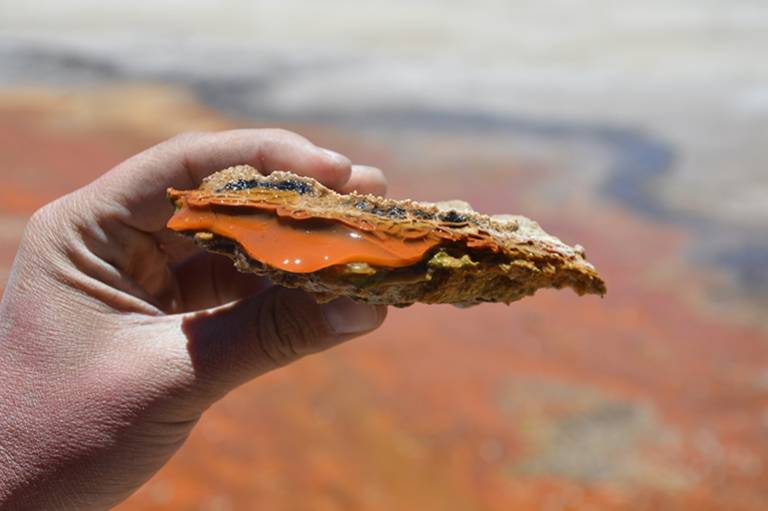Meet the Staff: Dr Martin Homann
6 June 2021
Dr Martin Homann, Lecturer in Sedimentology: I am a field geologist & sedimentologist with a strong interest in Geobiology, the early Earth, and the evolution of life on our planet starting about 3.5 billion years ago.

My interest in sedimentology, geobiology, and early life started as a graduate student studying Middle Jurassic microbialites in the High Atlas Mountains of Morocco. This passion continued throughout my PhD and postdoctoral research, until now when I successively began exploring the most ancient traces of life on Earth preserved in sedimentary deposits of the Archaean Eon (4,000 to 2,500 Ma).
“I always found it fascinating that it is possible to read sedimentary rocks like a book. Each layer holds its secrets and can tell you a different story, if you look closely enough. So yes, I am a total soft rocker!
Well, in theory at least, as most Archaean sediments are completely silicified and actually very hard. This early silicification is, however, also a blessing, especially when you are interested in well-preserved traces of early microbial life. Microbes are the oldest and most successful life forms on our planet. They dominated the Earth for more than 3 billion years before more complex multicellular life evolved around 500 million years ago. Microorganisms are very social beings and usually occur in communities of large numbers, forming microbial mats and stromatolites, which constitute the oldest morphological biosignatures on Earth.

Image: Stunning scenery in the Barberton Greenstone Belt, South Africa.
Fieldwork is an essential and also very enjoyable part of my work. One of my main study sites are the sandstones of the 3.22-billion-year-old Moodies Group located in the Barberton Greenstone Belt of South Africa that offer a unique window into an ancient fluvial and marine ecosystem. Together with a great team of collaborators I have made some very exciting early life discoveries in these deposits in the last years. For example, I led the team that discovered some exceptionally well-preserved microbial mats once thriving in an ancient river system, which extended the fossil record of life on land by ~500 million years (read the full story here).

Image: Polished slab of the 3.22 Ga Moodies Group with abundant fossilized microbial mats (dark laminations) interbedded with medium- to coarse-grained sandstone.
I am also involved as a PI in the ICDP funded drilling project BASE (Barberton Archean Surface Environments), designed to acquire a unique and continuous set of drill cores through the entire Moodies succession with a total length of more than 4000 m. The drilling activities will start this year, so with a bit of luck we will soon unravel even more secrets of the Moodies Group!

Image: Thick and juicy microbial mat at El Tatio geyser field, Chile.
Studying modern analog environments where microbial communities and mats are flourishing today is another important aspect of my research. This has brought me for example to El Tatio, a geothermal field in the Andes of northern Chile, where we drilled short cores into an extinct sinter mound to investigate its depositional history and microfossil content. It’s a magical place with stunning views but working at an altitude of 4,320 meters is literally breathtaking!
Another exciting aspect of my work involves astrobiology, applying my early-life expertise to the search for possible traces of life on Mars.
If you are interested in my research, or would like to discuss a possible collaboration, please get in touch!
Links:
- Dr Martin Homann's academic profile
- The drilling project BASE (Barberton Archean Surface Environments)
- The colonization of land by microbial mats 3,22 billion years ago.
 Close
Close

